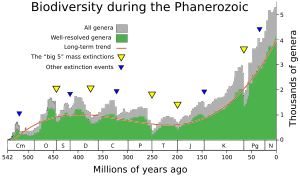Tiedosto:Extinction Intensity.svg
Siirry navigaatioon
Siirry hakuun

Tämän PNG-esikatselun koko koskien SVG-tiedostoa: 577 × 428 kuvapistettä. Muut resoluutiot: 320 × 237 kuvapistettä | 640 × 475 kuvapistettä | 1 024 × 760 kuvapistettä | 1 280 × 949 kuvapistettä | 2 560 × 1 899 kuvapistettä.
Alkuperäinen tiedosto (SVG-tiedosto; oletustarkkuus 577 × 428 kuvapistettä; tiedostokoko 194 KiB)
Tiedoston historia
Päiväystä napsauttamalla näet, millainen tiedosto oli kyseisellä hetkellä.
| Päiväys | Pienoiskuva | Koko | Käyttäjä | Kommentti | |
|---|---|---|---|---|---|
| nykyinen | 6. joulukuuta 2007 kello 23.03 |  | 577 × 428 (194 KiB) | Rursus | Font and outline fixes |
| 6. joulukuuta 2007 kello 22.55 |  | 577 × 428 (55 KiB) | Rursus | {{Information |Description=A hand made lookalike for the PNG image Image:Extinction Intensity.png at en.wikipedia. |Source=self-made |Date=~~~~~ |Author=Rursus |Permission={{GFDL}} inherited from Dragons flight |oth |
Tiedoston käyttö
Seuraava sivu käyttää tätä tiedostoa:
Tiedoston järjestelmänlaajuinen käyttö
Seuraavat muut wikit käyttävät tätä tiedostoa:
- Käyttö kohteessa ar.wikipedia.org
- Käyttö kohteessa be-tarask.wikipedia.org
- Käyttö kohteessa bg.wikipedia.org
- Käyttö kohteessa bs.wikipedia.org
- Käyttö kohteessa ca.wikipedia.org
- Käyttö kohteessa da.wikipedia.org
- Käyttö kohteessa en.wikipedia.org
- Käyttö kohteessa en.wikiversity.org
- Käyttö kohteessa eo.wikipedia.org
- Käyttö kohteessa es.wikipedia.org
- Käyttö kohteessa et.wikipedia.org
- Käyttö kohteessa fr.wikipedia.org
- Käyttö kohteessa he.wikipedia.org
- Käyttö kohteessa hr.wikipedia.org
- Käyttö kohteessa la.wikipedia.org
- Käyttö kohteessa mk.wikipedia.org
- Käyttö kohteessa ms.wikipedia.org
- Käyttö kohteessa nn.wikipedia.org
- Käyttö kohteessa no.wikipedia.org
- Käyttö kohteessa pt.wikipedia.org
- Käyttö kohteessa sh.wikipedia.org
- Käyttö kohteessa sr.wikipedia.org
- Käyttö kohteessa vi.wikipedia.org
- Käyttö kohteessa www.wikidata.org
- Käyttö kohteessa zh.wikipedia.org




